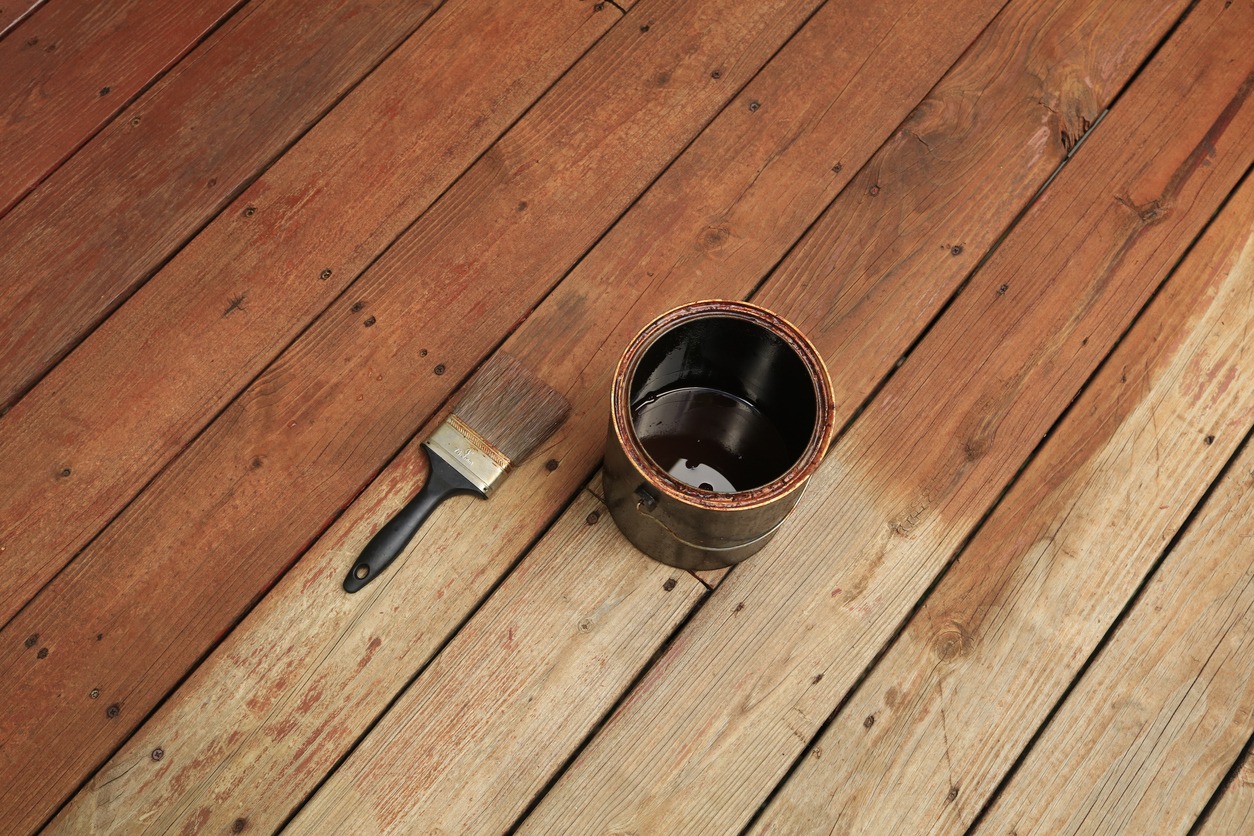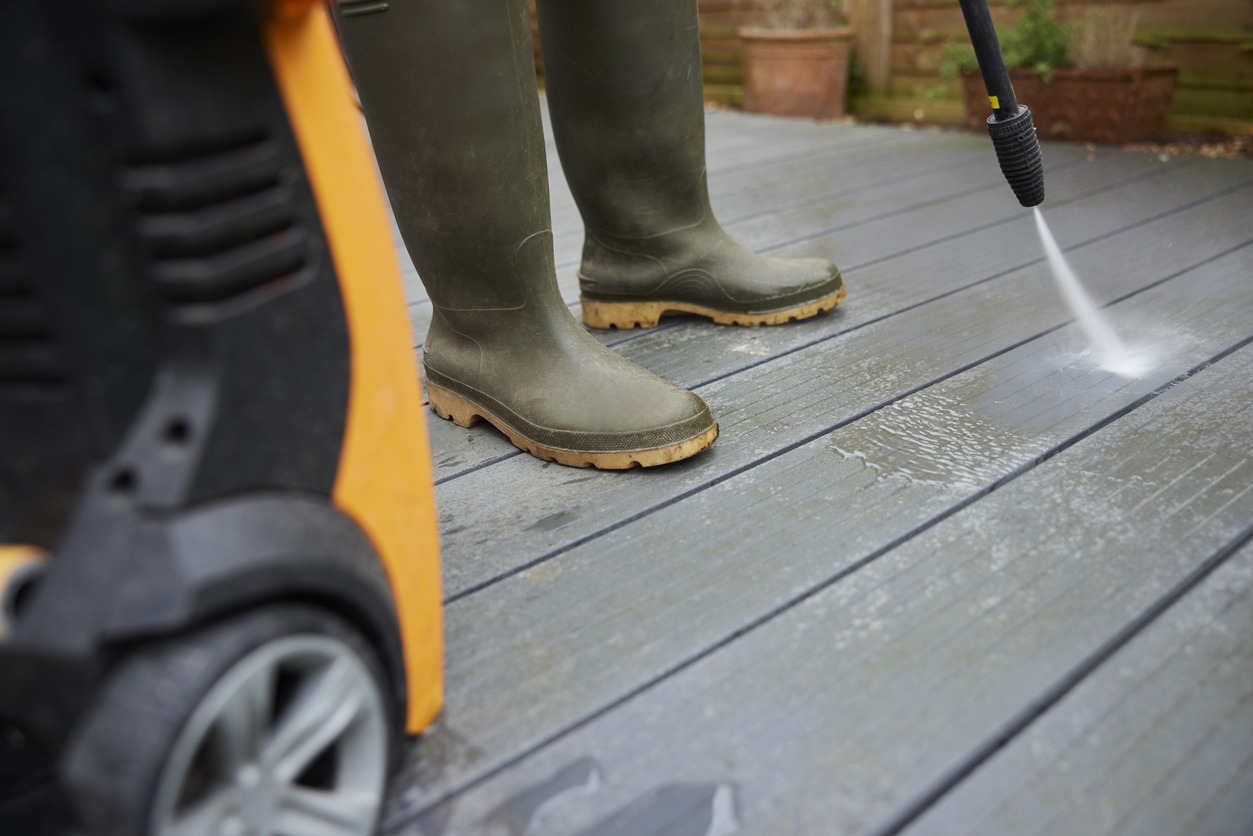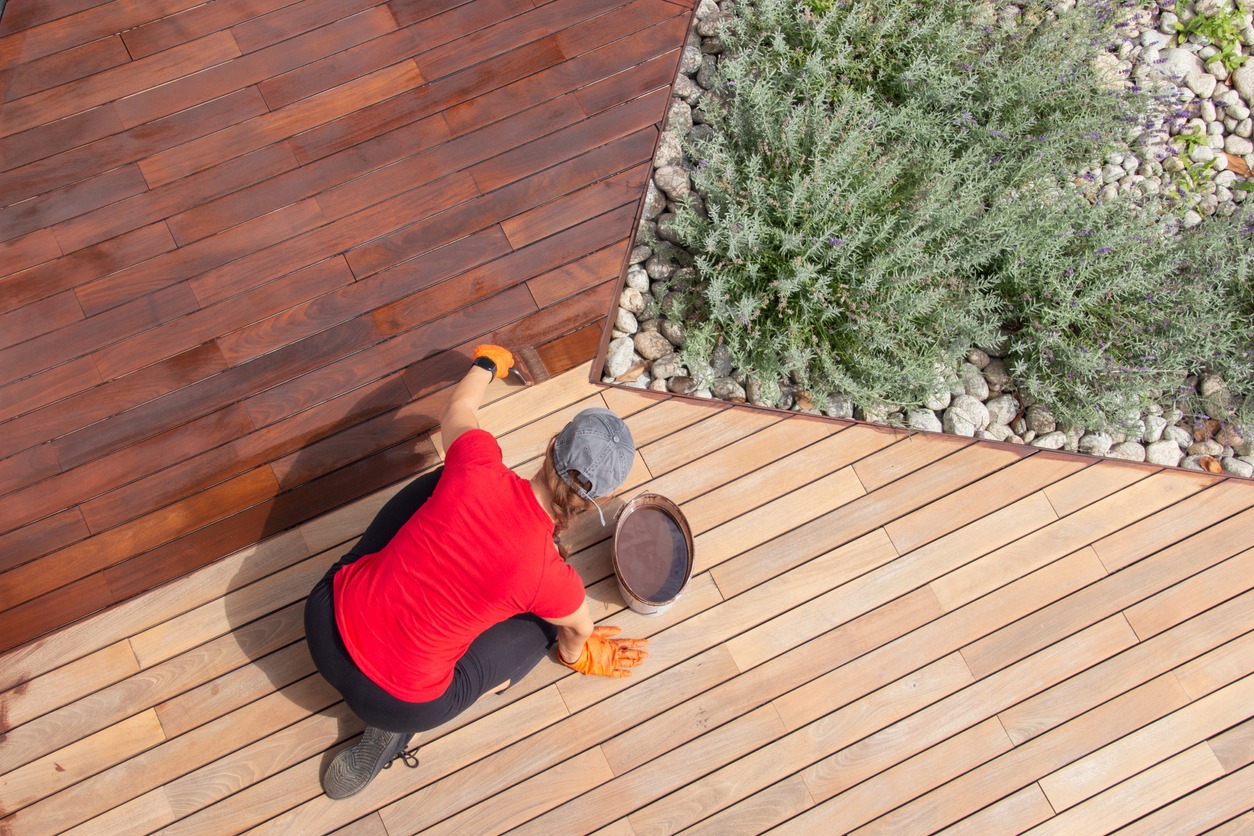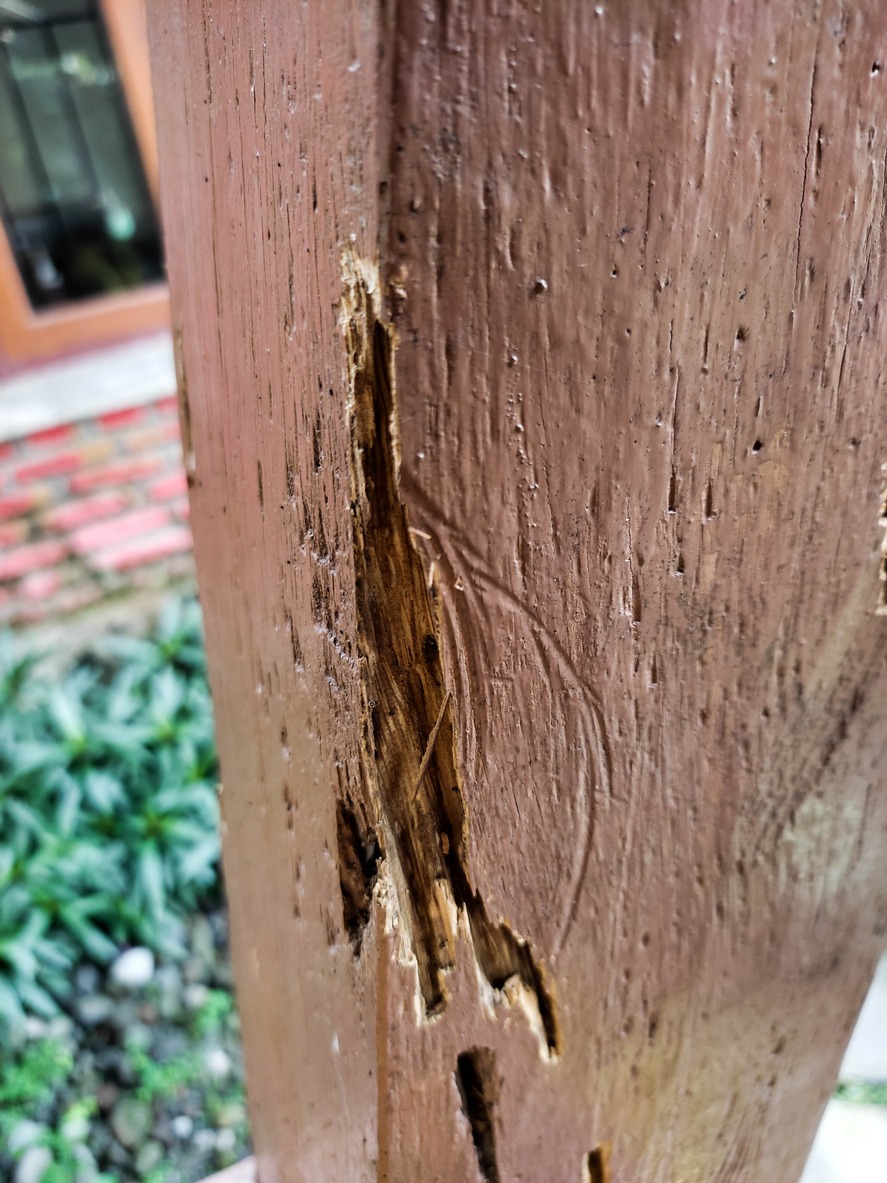Maintaining a deck is essential for preserving the aesthetic appeal and structural integrity of this valuable outdoor space. Regular deck maintenance not only extends the lifespan of the deck but also ensures it remains a safe and enjoyable place for relaxation and entertainment. Over time, decks are subjected to a range of weather conditions, from intense sunlight to heavy rain and snow, which can lead to wear and tear such as fading, splintering, and rotting.
To keep a deck in top condition, homeowners should conduct periodic inspections and follow through with the necessary upkeep tasks. These include cleaning to prevent the growth of mold and mildew, sealing to protect against moisture, and checking for any loose boards or protruding nails that could pose safety hazards. It’s important to address any issues promptly to prevent minor problems from escalating into major repairs.
Decks are a charming addition to any home, acting as a transitional space between the indoors and the natural environment. Through consistent maintenance and preservation efforts, homeowners can ensure that their decks remain durable and attractive year-round, adding value not only to their daily lives but also to the overall property.
Understanding Deck Materials and Construction
The longevity and safety of a deck heavily rely on the choice of materials and the quality of construction. Decking materials determine maintenance needs and resistance to elements, while construction basics ensure structural integrity and durability.
Types of Decking Materials
- Natural Wood: A classic choice for its natural beauty and variety. Common types include cedar, redwood, and other hardwoods. They require regular maintenance such as staining and sealing to prevent decay.
- Pressure-Treated Wood: An economical option often used for framing due to its resistance to rot and pests. It’s treated with chemicals to extend its life, but still needs periodic maintenance.
- Composite Decking: Composed of wood fibers and recycled plastics, this material offers a low-maintenance alternative to natural wood. It’s known for its durability, resisting warping, fading, and staining.
Deck Construction Basics
- Framing: The deck’s structural foundation, typically built with pressure-treated wood. Proper framing ensures stability and supports the deck’s weight.
- Railings: Essential for safety, especially for raised decks and porches. Railings can be made from the same materials as the deck itself or from other materials for design contrast.
- Porches: A covered area typically using the same materials as the deck but may also incorporate additional features like screens or glass for protection from the elements.
Routine Deck Cleaning and Care
Routine deck cleaning and care are vital for preserving the beauty and safety of one’s deck. Regular maintenance ensures the structure remains free of damaging mold and algae while maintaining its aesthetic appeal.
Cleaning Techniques
Pressure Washing: A pressure washer can be highly effective for deep cleaning a deck. It is important to use a suitable pressure setting to avoid damaging the wood. Lighter pressures are recommended to prevent the wood from becoming etched by the force of the water.
- For general cleaning:
- Use a fan tip nozzle.
- Keep the pressure under 800 PSI for softwoods.
- Increase to 1200 PSI for harder wood types.
- Steps for pressure washing:
- Remove furniture and other items.
- Sweep away loose debris.
- Wet the deck surface with water.
- Apply deck cleaner as instructed by the manufacturer.
- Use the pressure washer consistently, maintaining a steady distance from the deck surface.
- Rinse thoroughly to remove all cleaner and lifted grime.
Manual Cleaning: For those without a pressure washer or for more delicate areas:
- Prepare a cleaning solution suitable for the deck material.
- Use a stiff-bristle brush to apply the solution and scrub the surface.
- Rinse with a garden hose to clear away cleaning residue.
Preventing Mold and Algae
Mold and algae can be prevented through consistent cleaning and by ensuring the deck is able to dry properly. Key tactics include:
- Trimming Overhanging Branches: Promote sunlight exposure and air circulation.
- Clearing Debris Regularly: Leaves and trash can trap moisture and encourage mold growth.
- Using a Mold-Inhibitor: After cleaning, apply a product designed to prevent mold and algae.
The deck should be inspected regularly, ideally bi-annually, to identify and address early signs of mold or algae accumulation. If mold or algae are noted:
- Utilize a specialized cleaner tailored for removing molds or algae.
- Apply as per manufacturer instructions, typically involving application, dwell time, and rinsing.
Remember, the key to preventing the proliferation of mold and algae on a deck lies in routine checks and immediate treatment upon their discovery.
Inspecting and Addressing Repairs
Regular inspection and timely repairs are critical to extending the life of a deck. One should identify areas of concern such as damaged boards or structural weaknesses and apply appropriate repair methods to maintain the deck’s safety and aesthetics.
Identifying Damage
Loose Nails and Boards:
- Visually inspect the deck surface and framing for signs of loose nails and boards.
- Walk the deck to feel for movement underfoot that may indicate looseness.
Damaged Boards:
- Check for cracks, splits, or warping in the boards.
- Look specifically for soft spots that might signal rot.
Rot and Insect Infestation:
- Probe suspect areas with a screwdriver to test for softness, a common sign of rot.
- Inspect for any insect activity like boreholes or sawdust, which may indicate infestation.
Repair Methods
Damaged Boards:
- Replace boards that are significantly cracked, warped, or rotten.
- Match new boards to the existing material for consistency.
Loose Nails and Fasteners:
- Replace loose nails with deck screws that are longer and provide better hold.
- Tighten or replace any loose or corroded fasteners to ensure stability.
Addressing Insect Infestations and Rot:
- Remove and replace all wood compromised by insects or rot.
- Consider a professional inspection or treatment to prevent further damage.
By methodically addressing repairs through regular inspections, the maintenance process ensures the deck remains a safe and enjoyable space.
Staining and Sealing for Deck Preservation
Maintaining a deck requires regular staining and sealing to protect it from the elements and ensure its longevity. The right stain can enhance the natural beauty of the wood, while a proper sealant will shield it from moisture, UV rays, and foot traffic.
Choosing Deck Stains and Sealants
Deck stains and sealants are vital for deck preservation. They serve to protect the wood from environmental damage and enhance its appearance. When selecting a deck stain, one should consider the level of pigmentation desired. Transparent stains allow more of the wood’s natural grain to show through, while solid stains offer more pigment and greater protection against UV rays. For deck sealants, one must decide between water-based and oil-based options. Oil-based sealants typically penetrate deeper, providing better protection against moisture and helping to prevent the wood from cracking and warping. They also nurture the wood’s natural texture and are adept at preventing mildew growth.
Stain and Sealant Features:
- Pigment level: Transparent to solid
- Type: Oil-based vs. Water-based
- Protection level: UV, moisture, and scuff resistance
Staining and Sealing Procedures
Before Staining and Sealing:
- Clean the deck: Remove any debris, dirt, and old stains.
- Test the wood: Water should bead up; if it soaks in, it’s time to seal.
- Assess the weather: Opt for a dry day with moderate temperatures.
Staining Your Deck:
- Avoid puddles: Apply stain evenly without over-applying, which can cause puddles, leading to an uneven finish.
- Dry time: Follow the manufacturer’s instructions for dry time between staining and subsequent sealing.
Sealing Your Deck:
- Even application: Apply sealant in thin, even coats to avoid puddle formation.
- Cure time: Allow sealant to fully cure as per the product recommendations before using the deck.
Throughout the staining and sealing process, attention to detail can greatly affect the longevity and appearance of the deck. Regular maintenance, using these steps, significantly contributes to deck preservation.
Protecting Deck from Environmental Damage
Decks require protection from the elements to maintain their appearance and structural integrity. UV rays and moisture are the primary environmental culprits that can cause significant damage.
UV Protection
Direct sunlight can fade and deteriorate wood over time. To protect a deck from harmful UV rays, one can apply a UV-resistant finish. This finish often includes stain or paint that contains inhibitors which absorb or reflect UV radiation. Regular application of such finishes is crucial, typically every two to three years, to maintain their effectiveness.
- Choosing a UV-resistant stain: Select a stain with a UV-blocking agent. Transparent stains offer less protection, while semi-transparent and solid stains provide more UV-blocking properties.
- Using paint: Paint provides a protective barrier against UV rays. One should choose a paint designed for outdoor use with added UV inhibitors.
Moisture and Weather Resistance
Moisture can lead to wood expansion, contraction, and ultimately, rot. Several measures can be taken to enhance moisture and weather resistance:
- Sealants: A water-repellent sealant application can help prevent moisture from penetrating the wood.
- Wood preservative treatments: Treatments with borate compounds provide resistance to rot and insect damage by penetrating the wood and protecting it from within.
- Proper construction: Ensuring adequate spacing between boards allows for air circulation, reducing moisture buildup and the potential for decay.
- Routine maintenance: Removing debris from between boards and ensuring gutters are clean prevents water accumulation.
To optimize longevity, these protection strategies should be part of regular maintenance routines for wooden decks.
Upgrading with Modern Deck Enhancements
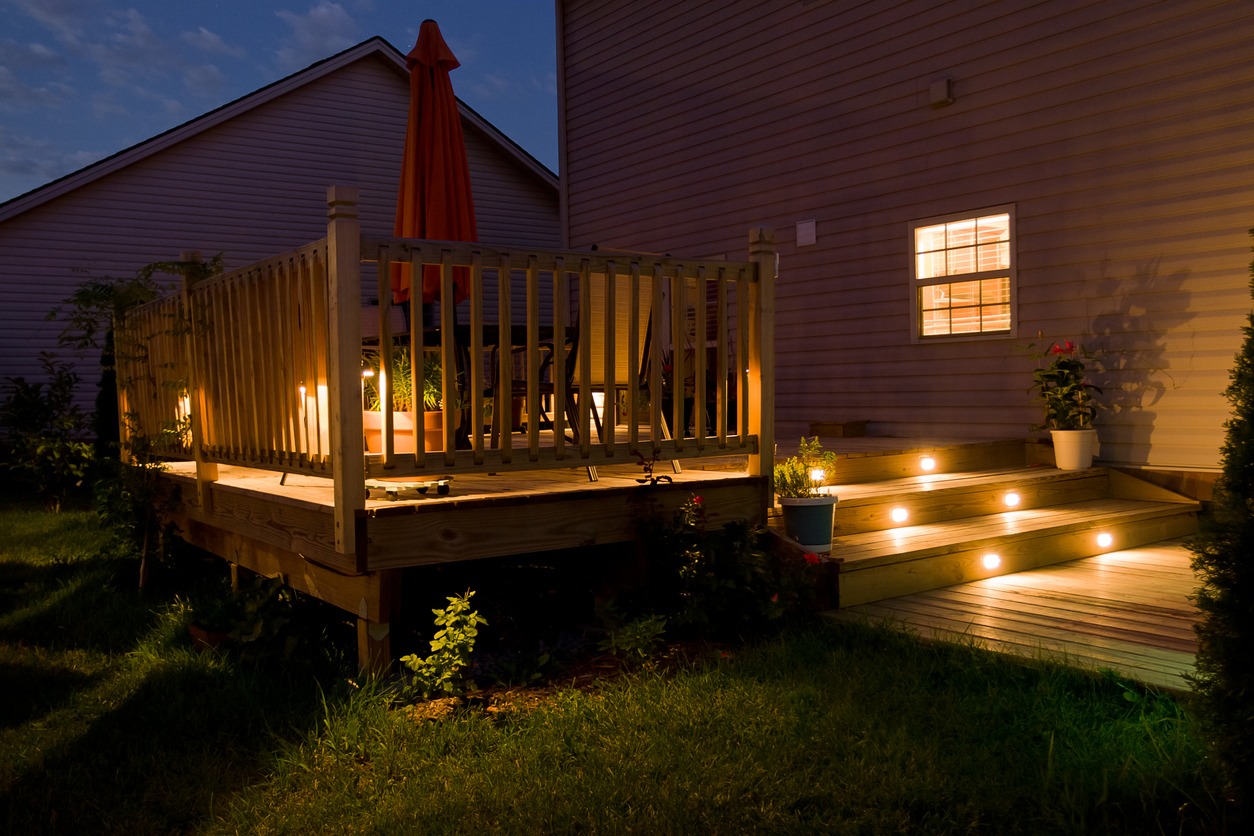
The modern homeowner has a variety of options when it comes to upgrading their decks with contemporary materials and design integrations. These enhancements not only improve aesthetics but also contribute to long-term durability and maintenance efficiency.
Innovative Decking Materials
When selecting materials for deck upgrades, homeowners are now looking beyond traditional wooden decks. Composite decking has become popular due to its longevity and low maintenance requirements. It’s constructed from a blend of wood fibers and plastics, resulting in a material that resists rotting, warping, and insect damage.
- Pros of Composite Decking:
- Durability: Lasts longer than wood without the need to stain or seal.
- Low Maintenance: Requires just a simple wash to keep it looking new.
- Variety: Available in multiple colors and finishes to mimic real wood.
- Other Materials:
- PVC: 100% plastic and even more resistant to elements than composites.
- Aluminum: A lightweight and rust-proof option for a modern look.
Integration with Deck Design
A thoughtfully designed deck goes beyond the choice of materials; it seamlessly integrates with the landscape and the architectural style of the house. Insightful deck design incorporates elements like built-in seating, lighting, and even integrated planters for a cohesive outdoor living space.
- Design Elements:
- Lighting: LED fixtures or solar post caps to enhance safety and ambiance.
- Railing: Glass or cable systems for unobstructed views.
- Multi-Level: Creating distinct zones for dining and relaxation.
By embracing these modern deck enhancements, homeowners create a space that is not only beautiful and functional but also stands the test of time with reduced deck maintenance needs.
Preventative Measures Against Pests
Effective deck maintenance includes strategies to prevent pests and insect infestations. Homeowners must recognize common threats and apply appropriate measures to protect their outdoor structures.
Pest Identification
Recognizing the type of pest is crucial for effective eradication and prevention. The most common pests that threaten decks include:
- Termites: These insects can compromise the structural integrity of wood.
- Carpenter Ants: They excavate wood to create nests, potentially damaging the deck.
- Beetles: Some species bore into wood, causing damage over time.
Treatment and Prevention Strategies
Homeowners can employ several strategies to protect their decks from pest-related damage:
- Choose Resistant Materials: Opt for pressure-treated wood or composite materials known for their resistance to insects.
- Regular Inspections: Check the deck periodically for signs of decay, which attracts pests.
- Water Management: Design the deck to prevent water pooling with appropriate sloping and drainage.
- Seal and Stain: Apply oil-based stains to enhance wood durability and prevent moisture retention that can lead to pest infestations.
- Trim Vegetation: Keep bushes and trees trimmed to avoid direct contact with the deck, which can serve as a bridge for pests.
- Eliminate Standing Water: Ensure no water accumulates near the deck structure to discourage pest breeding grounds.
By incorporating these practices into routine deck maintenance, homeowners can significantly reduce the likelihood of pest problems and maintain the longevity of their decks.
Professional Maintenance and Services
Deck maintenance is critical for preserving the longevity and aesthetics of outdoor living spaces. Homeowners often turn to professional services to ensure that their decks are properly cared for. These services typically include inspection, repair, cleaning, and sometimes structural enhancement.
Professionals use specialized equipment, like pressure washers, to effectively clean decks without damaging the wood or composite materials. They apply their expertise to remove dirt, grime, and mildew that can shorten a deck’s lifespan if not regularly cleaned.
- Inspection: Experts assess the deck for any signs of damage, wear, and structural integrity.
- Cleaning: Includes removal of debris and thorough washing, often followed by sealing.
- Repair: Involves fixing or replacing damaged boards, securing loose fixtures, and addressing any safety hazards.
| Service | Description | Frequency Recommended
|
|---|---|---|
| Pressure Washing | Removes built-up dirt and prevents decay. Should be done gently to avoid damage. | Annually |
| Sealing | A water-repellent sealant is applied to protect against moisture and weather conditions. | Every 2-3 years |
| Repairs | Professionals can fix or replace damaged parts of the deck to restore safety and aesthetics. | As needed |
It is prudent for deck owners to schedule regular maintenance by trusted professionals. Handyman firms have teams equipped to handle deck and patio repairs. Alongside the hands-on work, they can offer valuable advice on how to maintain a deck’s condition between service visits. This can include tips on daily upkeep and preventive measures to avoid future costly repairs.
Such meticulous care ensures that decks remain a comfortable extension of the home, providing a safe and enjoyable outdoor space for years to come.
